Samples
Shown below are photos of thin sections, pre-drilled slabs, and post-drilled slabs for each targeted sample. Shown on the thin section photo are the locations of points and line scans designated for laser ablation analysis. Sampling strategy for laser ablation points and line scans is briefly described below. Each trench drilled for this study is labeled with a sample name on the post-drilled slab photos. Most trenches were drilled lengthwise of the slab to obtain an overall bulk carbonate composition of the sample.
Tonian (1000-720 Ma):
** Beck Spring Dolomite and Assem Limestone are not recognized cap carbonates. These carbonates represent pre-Cryogenian ocean chemistry changes.
Beck Spring Dolomite (Death Valley, USA)
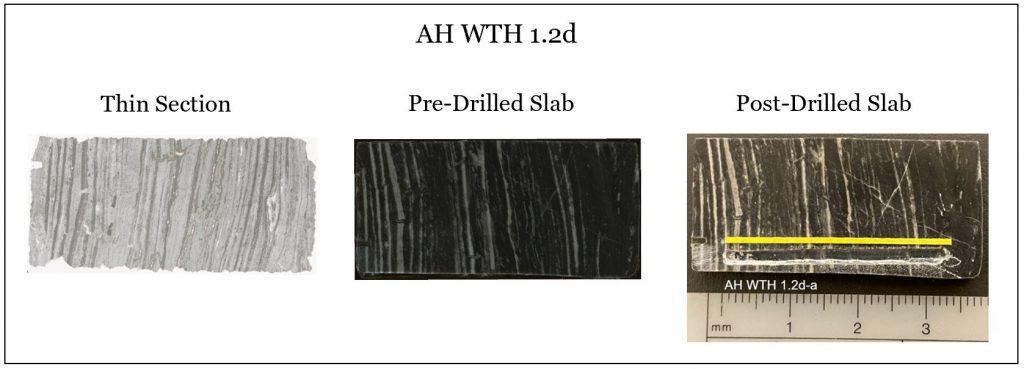
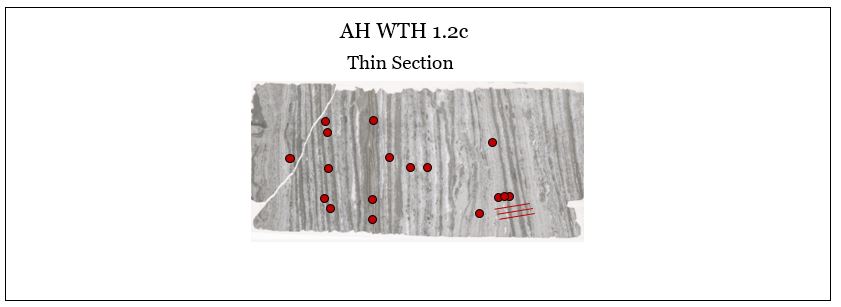
Spots targeted alternating light and dark laminations. Line scans investigated the same. Note that dark laminae appear light and light laminae appear dark in the thin section scans.
Assem Limestone (Ethiopia)
Samples are arranged in stratigraphic order. The bottom half of each thin section is stained to indicated sample mineralogy. Blue= calcite, pink=dolomite.
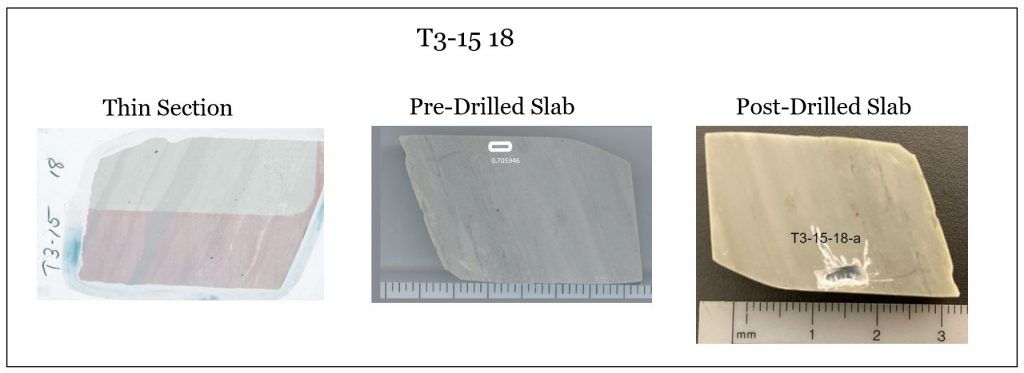
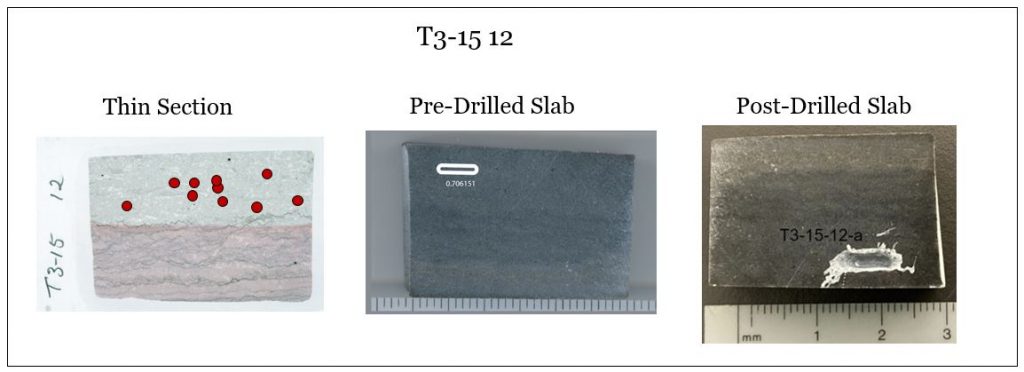
Random spots assigned to measure a bulk average composition.
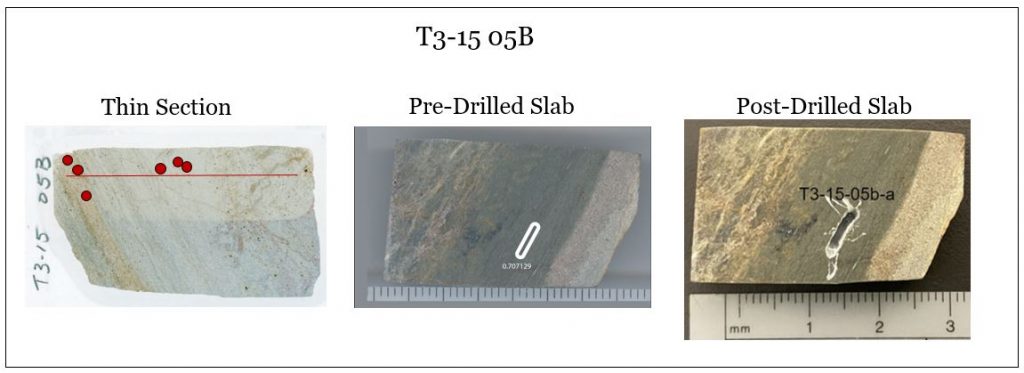
Spots targeted “rusty” part of sample and presumably less-altered middle section. Line scan targeted variability across the entire sample.
Post-Sturtian (717-659 Ma)
Rasthof Formation (Namibia)
Samples are arranged in stratigraphic order. S5 is from the basal member of the Rasthof Formation and contains a dropstone clast. S5 directly overlies the Chuos diamictite. Both the cap carbonate matrix and the dropstone have a mineralogic composition of dolomite. The dropstone clast represents bedrock that the grounded glacier likely picked up while flowing offshore. When the glacier melts the dolomite clas fell into the sea bed during initial cap carbonate deposition. S2 and S3 are not from the same locality as S5, but are both in a stratigraphically higher position. This interval is characterized by fine laminations, roll-up structures, and microfossils (Bosak et al., 2012).
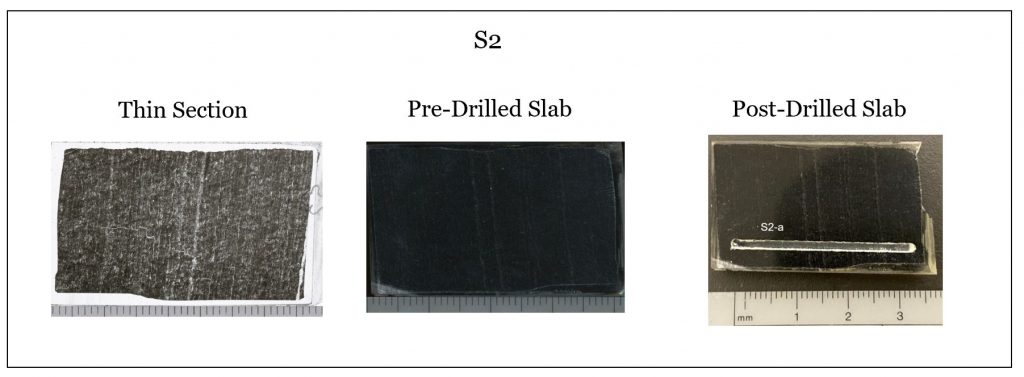

Spots targeted light and dark laminations. Line scan assigned to assess compositional variability across the sample.
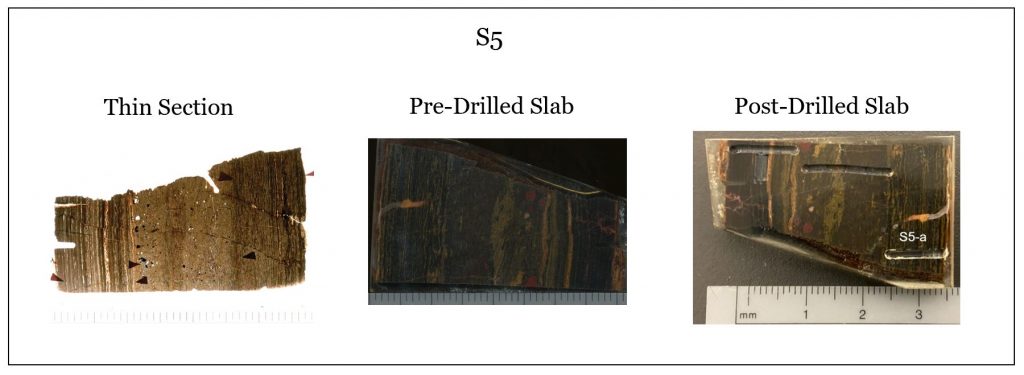
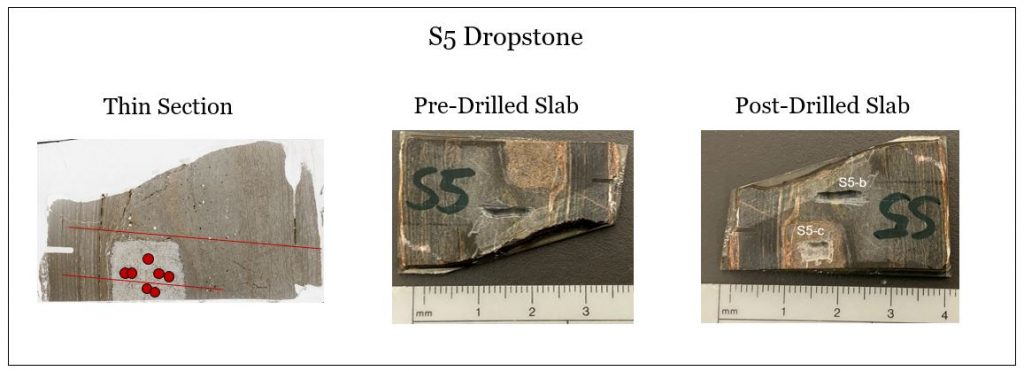
Spots analyze composition of the dropstone. Line scans assigned to measure compositional variability across the dropstone and remainder of the sample.
Tindelpina Shale Member of the Tapley Hill Formation (Australia)
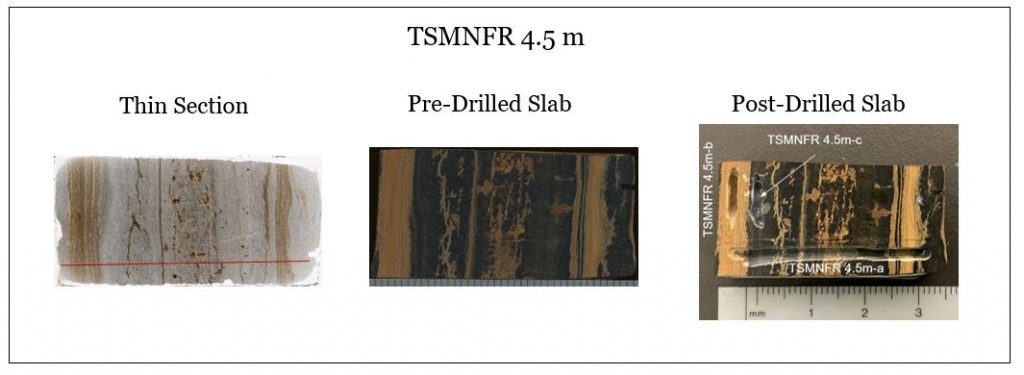
Line scan assigned to assess compositional variability across the sample.
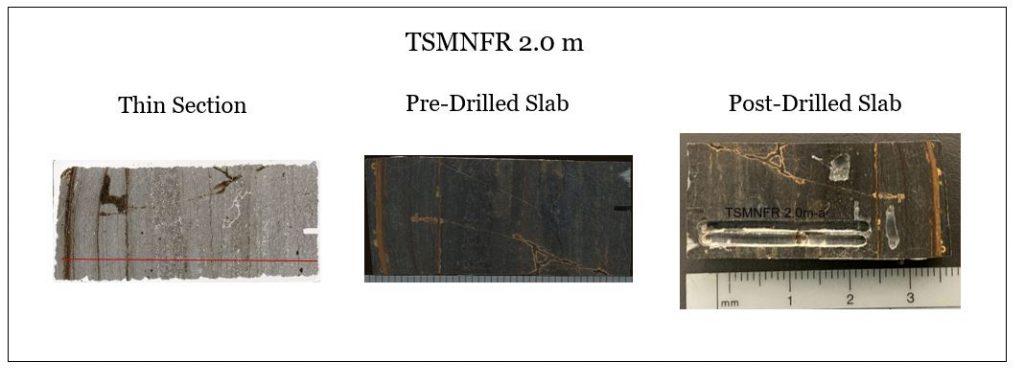
Line scan assigned to assess compositional variability across the sample.
Scout Mountain Member of the Pocatello Formation (Idaho, USA)
The Scout Mountain Member is unique in that it rests in-between two diamictite units. The slab and thin section show below contain a distinct aragonite fan.

Line scans to assess compositional variability across aragonite fans. Spots assigned to compare rougher versus smoother parts of the sample.
Post-Marinoan (645-635 Ma)
Noonday Dolomite (Death Valley, USA)
Both samples are the the basal Noonday Dolomite which is in direct contact with an underlying diamictite from the Kingston Peak Formation (member KP4 or KP3).
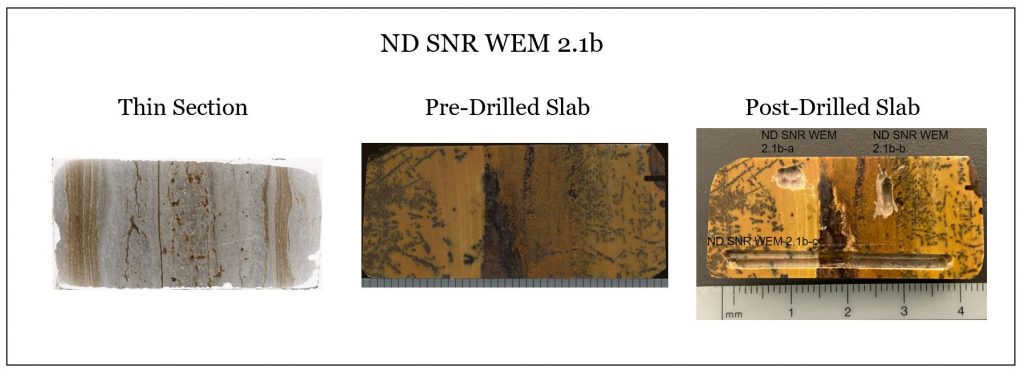

Spots assigned to compare brown and “rusty” laminations.
Keilberg Formation (Namibia)
Samples are from the basal Keilberg Formation that is in contact with an underlying diamictite from the Ghaub Formation.

Line scan assigned to measure compositional variation across the sample.
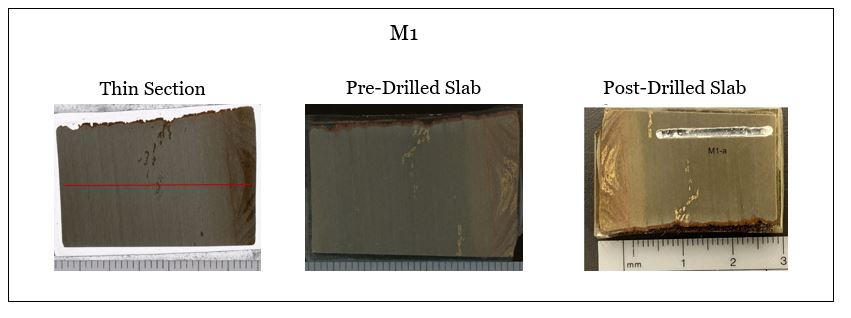
Line scan assigned to measure compositional variation across the sample.
Mirassol D’Oeste Formation (Amazon Craton, Brazil)
Samples arranged in stratigraphic order. Only thin sections were available for analysis in this study. Sample SA-2A is stratigraphically lower than sample SA-26.
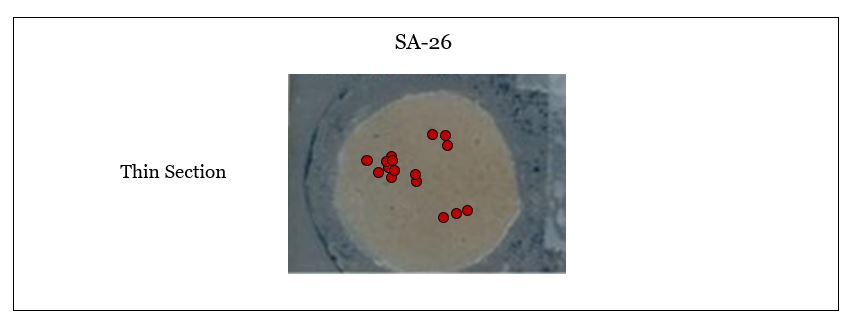
Random spots assigned to determine bulk composition of sample (no slab available for microdrilling).
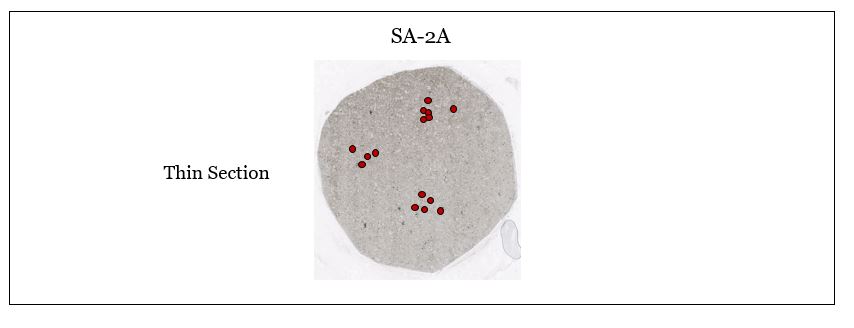
Random spots assigned to determine bulk composition of sample (no slab available for microdrilling).
